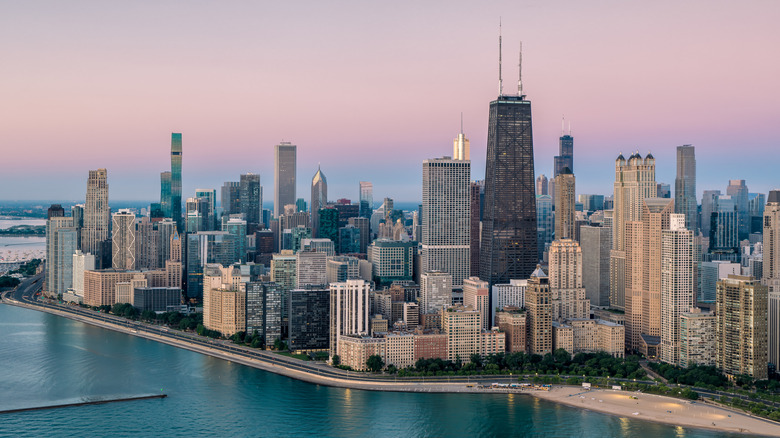
Where to start with the biggest metropolis in the Midwest? The third-most populous city in the United States is as richly textured and varied as that statistic might suggest. Chicago has it all, from elegant neighborhoods with old-world charm to modern innovation and glitz. The Windy City is one of the country's best summer food destinations, and its location on the shores of Lake Michigan means plenty of unique beaches with iconic views. The city also boasts a lively culture, some of the country's most stunning
architecture, and an undeniably beautiful waterfront (along with some of the most passionate people in the United States).
Yet, for every well-known attraction — such as Navy Pier, Millennium Park, and the Willis Tower — there are countless hidden gems worth visiting. These places might not be part of the mainstream public discussion, but they add extra sheen to an already shining destination. Scouring sites like Reddit and Chicago's own official tourism website, we have compiled a list of the best ones out there.
Read more: Unwritten Rules You Should Know Before Visiting Chicago
Albany Park

A neighborhood located north of downtown, Albany Park might as well be called the United Nations of Chicago. This is a hub of diversity, and that wealth of cultures and languages has influenced the cuisine that is available. Visitors can enjoy Romanian, Filipino, Somali, Cambodian, and more, all within a quick stroll from one another. West Lawrence Avenue is one of the main drags for culinary delights, so don't forget to pack your appetite.
West Lawrence Avenue is home to Ssyal (Korean), Cardona's Restaurant (Mexican), El Fogón de Elena (Colombian), and many more. You can also find Kyrgyz dishes at Arzan Cafe, Persian plates at Noon O Kabab, and cool cocktails at Nighthawk. The neighborhood is also home to Albany Park Theater Project, which stages youth and adult shows, as well as a pair of attractive parks dissected by the iconic power of the Chicago River.
The Annoyance

Think of Chicago and comedy, and your mind will inevitably be drawn to The Second City troupe. The club first opened in 1959 as a cabaret theater, but it soon became synonymous with comedy, serving as a breeding ground for some of the country's most notable comedic talents, including Tim Robinson, Dan Aykroyd, Tina Fey, John Belushi, and Joan Rivers. It remains a major influence, to the point where a night at Second City almost certainly means seeing a future star. The Second City, however, is no insider secret, but rather a vast comedic empire. It is, in a sense, almost too famous.
The Annoyance, on the other hand, is a lesser-known alternative for visitors looking for some great comedy in Chicago. Located in the Lake View neighborhood in the north of the city, away from many of Chicago's classic tourist haunts, the club has been staging comedy shows, improv, and musicals for more than three decades. Performances run all week, and the center also offers classes for budding jokesters.
Broadway Antique Market
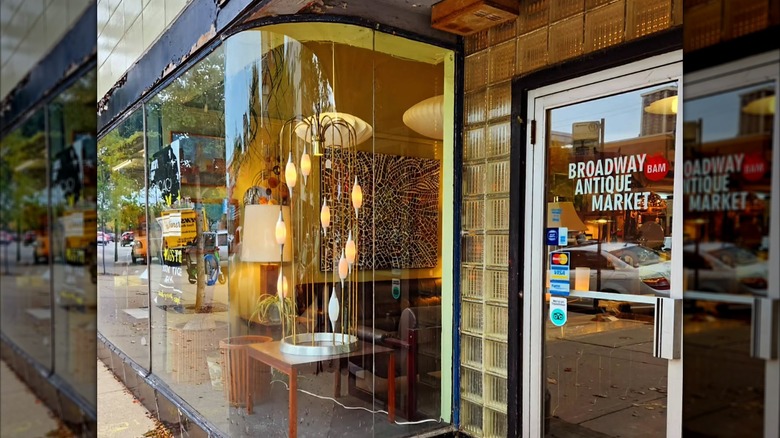
Even the sign for this antique market in the historic neighborhood of Edgewater is straight from another era. The large red letters that spell out Broadway Antique Market on the side of the building seem straight from the 1970s and hint at the aged treasures found within. This giant hub is the largest antiques shop in the city. For antique lovers, hunters for one-of-a-kind pieces, and shoppers that like to rummage, this is a fabulous destination.
The market is home to more than 70 antiques dealers. Over its two floors, travelers can find pre-loved jewelry, art, furniture, and more. Wander the aisles between individual stalls and sellers, and you might discover expansive velvet couches in lime green, delicate shaded lamps, matching sets of china plates and bowls, giant sand-glasses, and ornate mirrors.
Driehaus Museum
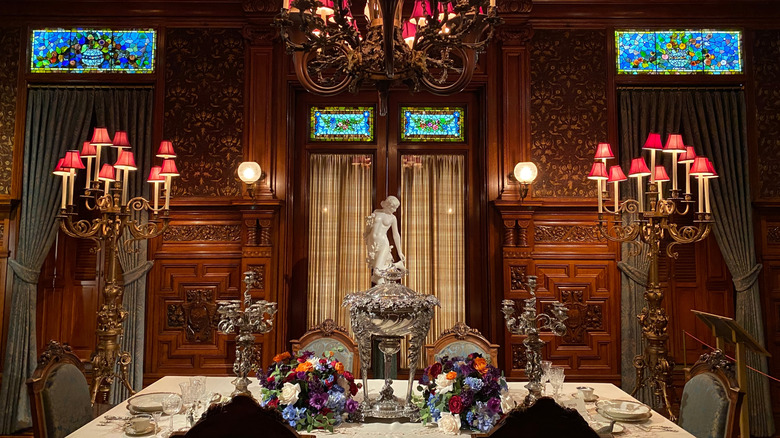
Located about a mile on foot from Navy Pier (and close to the Magnificent Mile), this ornate mansion-turned-museum lets visitors step back into the Gilded Age of the late 19th and early 20th centuries. Its tale reinforces the power of community, as it was twice spared from falling into disrepair by locals. Most recently, the philanthropist Richard H. Driehaus poured money into the building to facilitate a large-scale renovation.
The museum is actually composed of two buildings. One is a mansion from 1883 that belonged to a banker, while the other is a Neo-Classical auditorium from the 1920s built by the American College of Surgeons. While the home still feels steeped in its original period, the exhibits range from that era to more modern times. Travelers might wander the spaces and see delicate floral paintings by a Scottish artist, or a selection of gleaming, pristine Tiffany lamps.
Garfield Park Conservatory
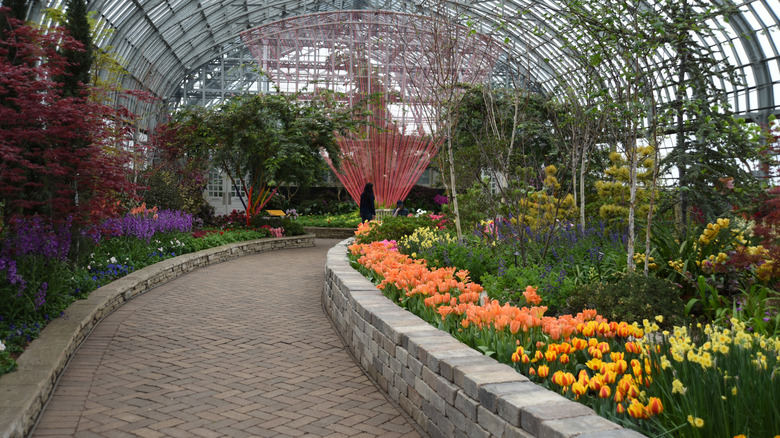
This huge conservatory, attached to a park of the same name, features thousands of plants. It first opened in 1908 as a successor to three smaller greenhouses. From a distance, the building is designed to resemble a haystack. The core of the conservatory is the Fern Room, which blends elements of water and stone. This is where to find a waterfall that some early visitors believed was natural, with the glass conservatory assembled around it.
Over the decades, visitor numbers ebbed and flowed, and this hallowed institution seemed destined for the chopping block until the Chicago Park District embarked on a grand renovation in the 1990s. Today, visitors can enjoy the eight temperature-controlled rooms and large summer outdoor gardens in their restored splendor. The Palm House is filled with palms, while the Aroid House has lily pads created by the unparalleled glass artist Dale Chihuly.
Get A Grip Trapeze
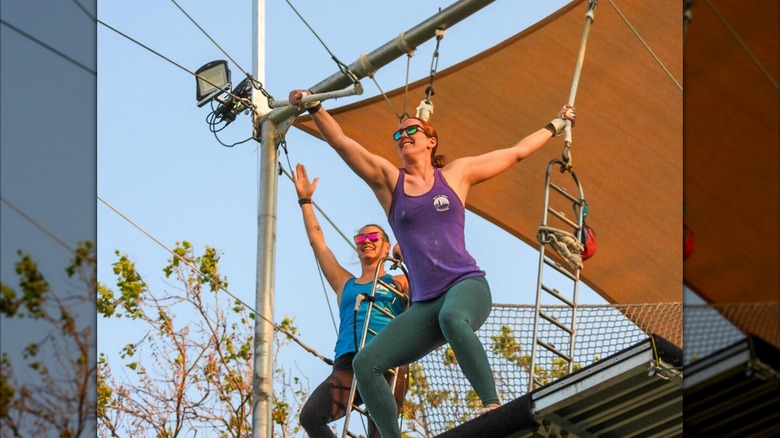
For many kids who went to the circus, mastering the trapeze seemed like the ultimate fantasy. Visitors who harbored such dreams can make them a reality in Chicago with some time at Get A Grip Trapeze. The circus school has the only flying trapeze set-up — the type where performers leap from swing to swing — in the city, so travelers can try out the moves that they have seen others attempt in the past.
Classes run at Foster Beach (close to Andersonville) in the summer months, while they move to the Broadway Armory Park when the mercury dips. In addition to trapeze, participants can try their hand at silks, static trapeze, trampoline, and the aerial sling. Best of all, the school takes all comers, and prior knowledge of circus arts is not a prerequisite. Students as young as 6 years old are welcome to sign up.
Graceland Cemetery And Arboretum
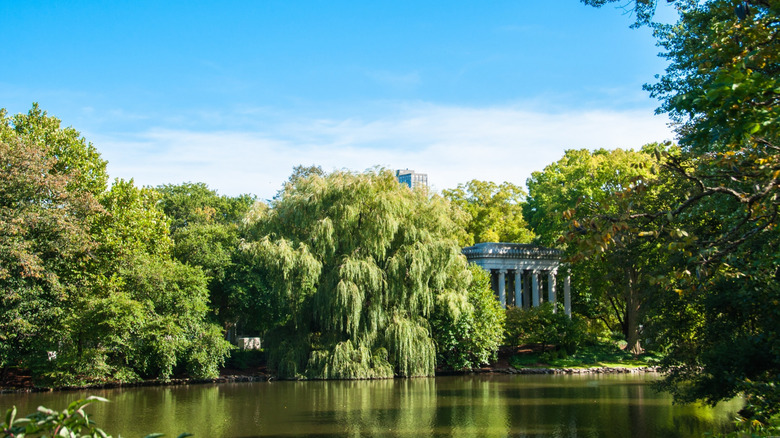
Some travelers may find the idea of visiting a cemetery for tourism purposes a tad unusual. However, this peaceful place is perfect for quiet reflection, and it is easily accessible, located where two major thoroughfares — North Clark Street and West Irving Park Road — meet. The landscaping there is so precise that the cemetery feels like a manicured park, albeit one that is the final resting place for many luminaries who have left their imprint on Chicago.
Graceland Cemetery can trace its origins to 1860, when it was created by the high-flying Chicago lawyer Thomas Bryan. It was designed by prominent landscape architects William Le Baron Jenney and Ossian Simonds, and it slowly grew to around 120 acres. This is a tranquil area to wander, and also one filled with nature, with more than 2,000 trees thriving in this slice of North Chicago.
The Insect Asylum
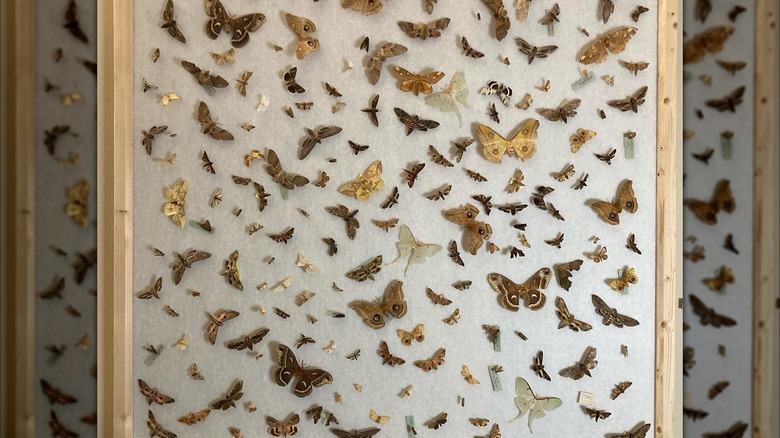
Where to start with this jewel on North Milwaukee Avenue? While technically a taxidermy museum, the Insect Asylum is actually more nuanced. Sure, there are more than 5,000 items on display detailing insects small and large (many of them living), but the center is also an arena where visitors can indulge their artistic prowess. That is why you will find music, dance, poetry recitals, and other events at the Insect Asylum.
One fun event is a BYOB painting class, aimed at patrons 21 and older. The model is an opossum, one that wanders around the table as it is being painted! Taxidermists can take a workshop covering animals such as squirrels and owls. The operation is a non-profit, and within its gift shop, travelers can find pieces from more than 50 local artists.
International Museum Of Surgical Science
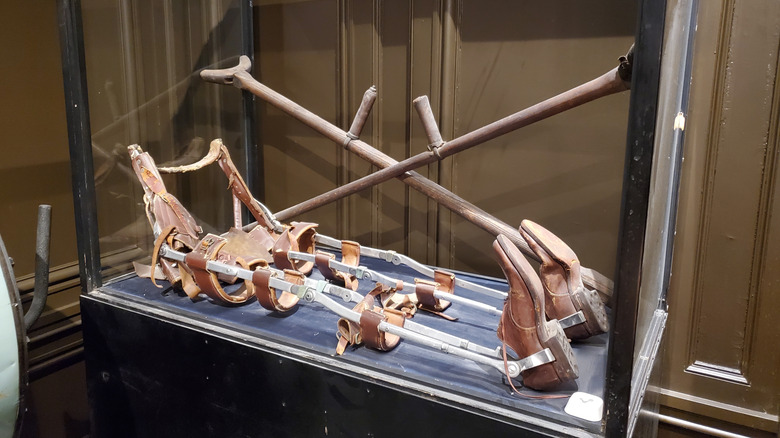
Located on North Lake Shore Drive near the bottom of Lincoln Park, the International Museum of Surgical Science opened more than 70 years ago as a way to spread the knowledge of surgical practices. It was linked to the International College of Surgeons, and pieces from the Chicago-based college — such as notable apparatus, documents, and drawings — were donated to create the collection. The museum officially opened in 1954, and one of its earliest exhibitions remains one of its most monumental.
Called the Hall of Immortals, it comprises 12 grand stone statues of people who were pioneers in medicine. Since opening, the collection has grown, and soon murals of other notable scientists appeared, as did halls dedicated to countries such as Mexico, France, and the Netherlands. Today, the museum is a treasure trove of surgical history, four floors that will fascinate anyone with an interest in medicine or the human body.
Jackson Park
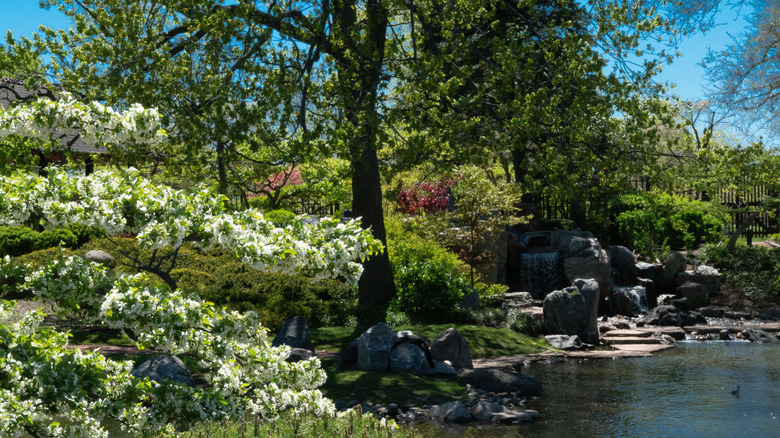
The Garden of the Phoenix is one of the main attractions of Jackson Park on Chicago's South Side. The park spans more than 550 acres by Lake Michigan, and in addition to a gymnasium and fitness facilities, it features an island and a basin where cherry blossoms bloom in the spring. The park has quite a pedigree. It was named for Andrew Jackson, the country's seventh president, and was designed by Frederick Law Olmsted and Calvert Vaux, the driving forces behind New York City's famed Central Park.
The park also was the site of the World's Fair in 1893, and the Garden of the Phoenix was unveiled in the same year. The Japanese-style area transports visitors to Asia, with its waterways, pagodas, and peaked roofs. The park is a beautiful place to explore, one with dense woods, meandering paths, calm lagoons, and attractive bridges.
National Museum Of Mexican Art
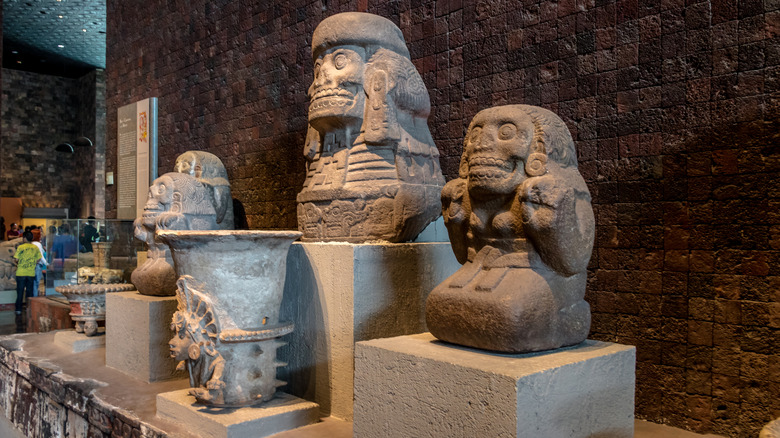
While Chicago might be a long way north of the border with Mexico, this free museum is perfectly located. It resides in the predominantly Mexican district of Pilsen, a neighborhood that was filled with Czech migrants in the 1840s (hence the name), before Mexican people started heading here in the 1960s. The museum can trace its roots to the early 1980s, beginning as an arts center and gradually settling in a large facility in Pilsen, its current home.
Mexican art and stories are central to all exhibits, which include paintings, visual art, and performances. Expect to see colorful sculptures that honor the Day of the Dead, vibrant textiles, and ancient artefacts. While visiting, be sure to check out Pilsen as a whole. You'll see fabulous murals, enjoy some great food, and on the second Friday of each month, get to tour local galleries and studios for free.
North Branch Trail
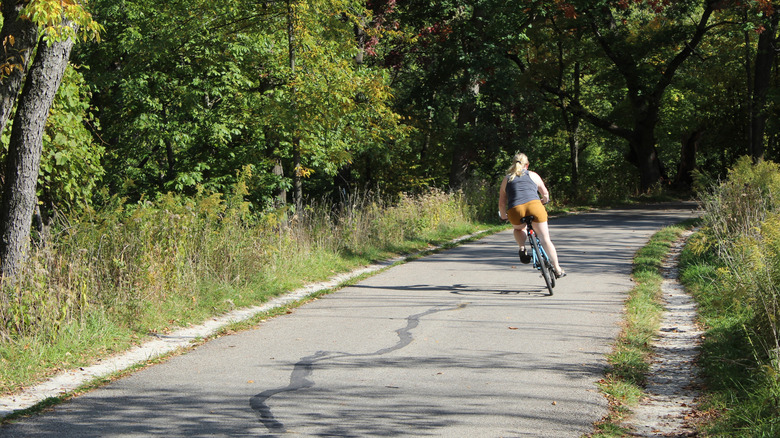
While Chicago might be known for its soaring architecture, it also holds an abundance of rich natural beauty and restorative greenery. The North Branch Trail is a prime example. This route in the north of Chicago combines paved and unpaved trails that are both paved and unpaved that shadow 20 miles or so of the Chicago River. It actually traces the north branch of the river, which explains the name.
The North Branch Trail is a fantastic spot for biking and hiking, and it links parts of the city to sections as far away as Glencoe, home to the Chicago Botanic Garden. Adventurers can choose from various options, including sections that are for bicycles only and trails that loop or head in a single direction. The North Branch Trail offers explorers the chance to wind through areas of natural beauty, with paved roads shaded by towering trees, particularly alluring during the fall.
North Park Village Nature Center
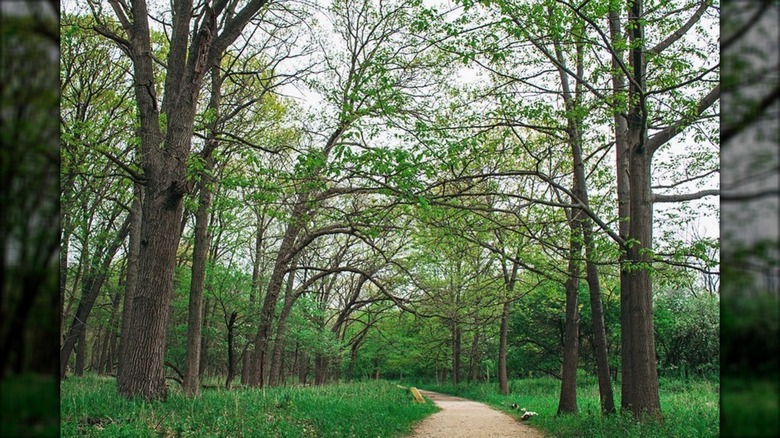
The green scenery around the North Park Village Nature Center might not offer visitors any clue as to its former existence. In the early 1900s, when tuberculosis was rampant in this part of the country, a sanitarium was constructed northwest of the city, on land that had once been a tree nursery. It was believed that these verdant environs would help patients to recover. The landscape architect Ossian Simonds was tasked with designing the site, and part of the plan featured a brick cottage.
A large sanitarium was added, which operated from 1915 for about 60 years, closing when tuberculosis was no longer considered a health threat in this part of the country. Despite plans to reconfigure the site, local activists were able to ensure the preservation of the buildings and land. The brick cottage is now a visitor's center, and travelers will be able to wander around prairie, wetlands, and 12 acres of woodland. This is also a fabulous spot for birdwatching.
Palmisano Park Natural Area
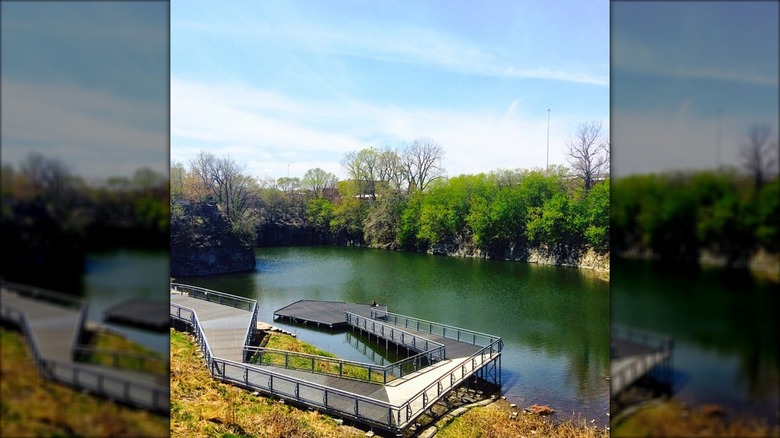
In the shadow of Interstate 55, this rehabilitated quarry has boardwalks and elevated sections with fantastic skyline views. Palmisano Park spreads across 26 acres of the Bridgeport neighborhood, and the land is unrecognizable from its former state (the large Stearns Quarry). That facility was a rich source of limestone, a key ingredient for the construction that raged across Chicago, and was mined for 130 years.
The quarry ceased operations in 1970, and was turned into a landfill for old construction materials. In the 1990s, dumping ceased, and plans were made to transform this eyesore into a park. The dump was closed, huge deposits of topsoil were added to create a mound-like hill, and the park took shape. Today, visitors can explore wetlands and prairie, walk on 1.5 miles of pathways, and peer into a pond where the quarry pit once stood. Look out for birds such as the black-crowned night heron.
Peggy Notebaert Nature Museum

There is much to admire at this institution just north of Lincoln Park. For many visitors, the highlight is the Judy Istock Butterfly Haven, a 2,700-square-foot greenhouse where over 1,000 butterflies fly freely. Watching them flutter hither and thither, maybe even land on your hand, is a touching sight and a moving experience. The daily butterfly release, at 2 p.m. throughout the year, is not to be missed. Another exhibit of winged wonders presents more than 100 regional birds, including cardinals, geese, and turkeys.
A compact nature trail allows travelers to experience plants from the local habitat. Indoors exhibitions also follow a natural theme, with paintings of flowers, aquatic landscapes, and more. A short distance south of the museum, travelers will find the Alfred Caldwell Lily Pool. It is a very scenic spot, with water flowing along limestone stacks and plenty of wildlife all around.
Wild Mile
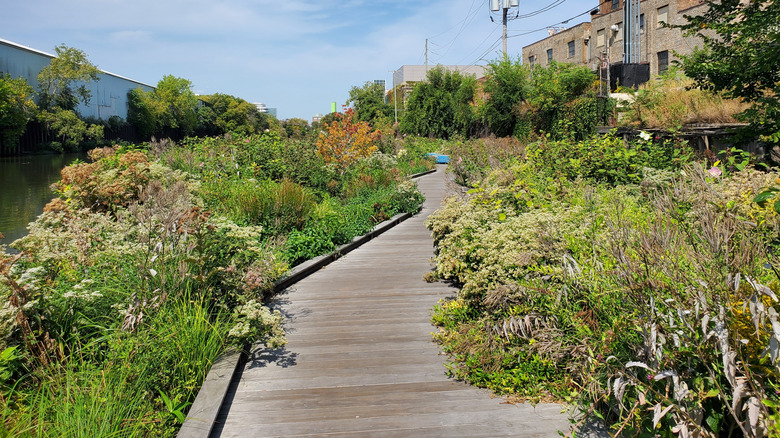
While the Wild Mile is actually a park, it is unlike any other green space in the city. Wild Mile is the brainchild of a non-profit organization called Urban Rivers, and the park floats on a canal of the Chicago River, with boardwalks that weave through built habitats. The intention is to recreate the feel of a wetland, which were commonplace in this part of the country before development reshaped the landscape.
Wild Mile park is constructed on a series of pontoons, and wetland plants were introduced with the hope that they will eventually take root in the river and become a natural part of the ecosystem. The Wild Mile is open all day and all night, and while it is primarily a space of wilderness, it also serves as a tool for education and a medium for community events. Please note that the park is currently only 700 feet in length, but the plan is to build it to run for a mile along the canal.
Woolly Mammoth
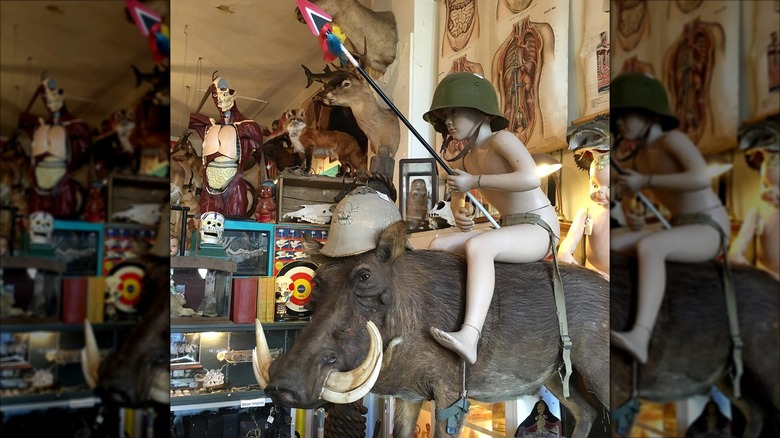
If you had to pick a name for a non-traditional store, Woolly Mammoth is a fabulous choice. This shop in the Andersonville neighborhood is hard to categorize, and its website simply states that it is a place for antiques and oddities. What you will find within the store defies conventional description, but this place is guaranteed to take visitors on a journey into the weird and wonderful.
Woolly Mammoth could almost be considered a museum of sorts, one where cabinets and shelves display taxidermy, pieces of skeletons, books, skulls, toys, maps, art, funeral items, medical apparatus, and so much more. Travelers might peruse the space and come across a bison head, the head of a mouse in a gift box, a dagger made from the bones of a flightless bird, old masks, antique clocks, and vintage match books. Take some time to wander around Andersonville, with many dining options located along Clark Street. If you can drag yourself from all the oddities, of course.
Wrightwood 659

Located in Lincoln Park, this gallery is as visually stunning as the pieces it showcases. That will come as little surprise to followers of contemporary architecture, as Wrightwood 659 was designed by Tadao Ando, a Japanese architect known for his use of concrete and who famously constructed a museum on Japan's "art island." The name of the space reflects its location and the exhibitions focus on art and architecture.
Expect a sophisticated aesthetic, where long, straight corridors are flanked by sturdy panels of concrete on one side and floor-to-ceiling windows on the other. Natural light suffuses public areas, and large parts of the original 1920s building remain, uniting the old with the new. Guests will see soaring brick walls right next to minimalist, modern, floating staircases cast in gray concrete. Exhibitions are richly varied in subject matter, and can range from Himalayan art to early photos of LGBTQI+ couples.
Methodology
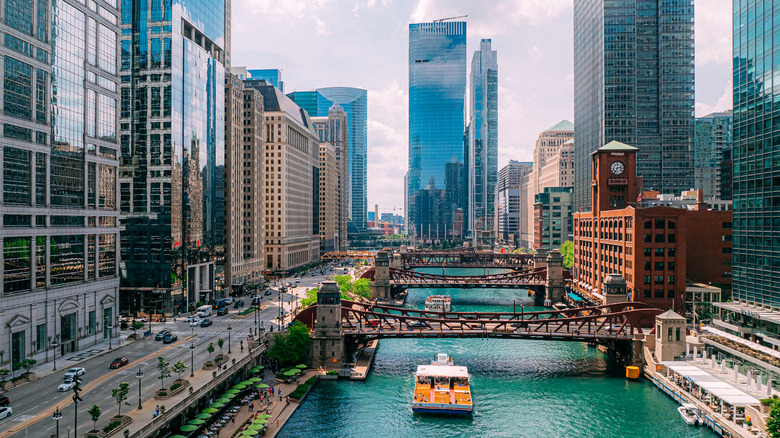
For all the nationally known attractions in Chicago, there are many more that fly under the radar. We compiled our list by carefully studying Chicago's official tourism site and Reddit. We selected attractions that wcater to different tastes, mixing outdoor options with museums, stores, and other indoor spots. We also tried to choose gems that are located throughout the city, so that visitors, wherever they are staying or going in Chicago, can find something close by.
Ready to discover more hidden gems and expert travel tips? Subscribe to our free newsletter for access to the world's best-kept travel secrets.
Read the original article on Islands.













